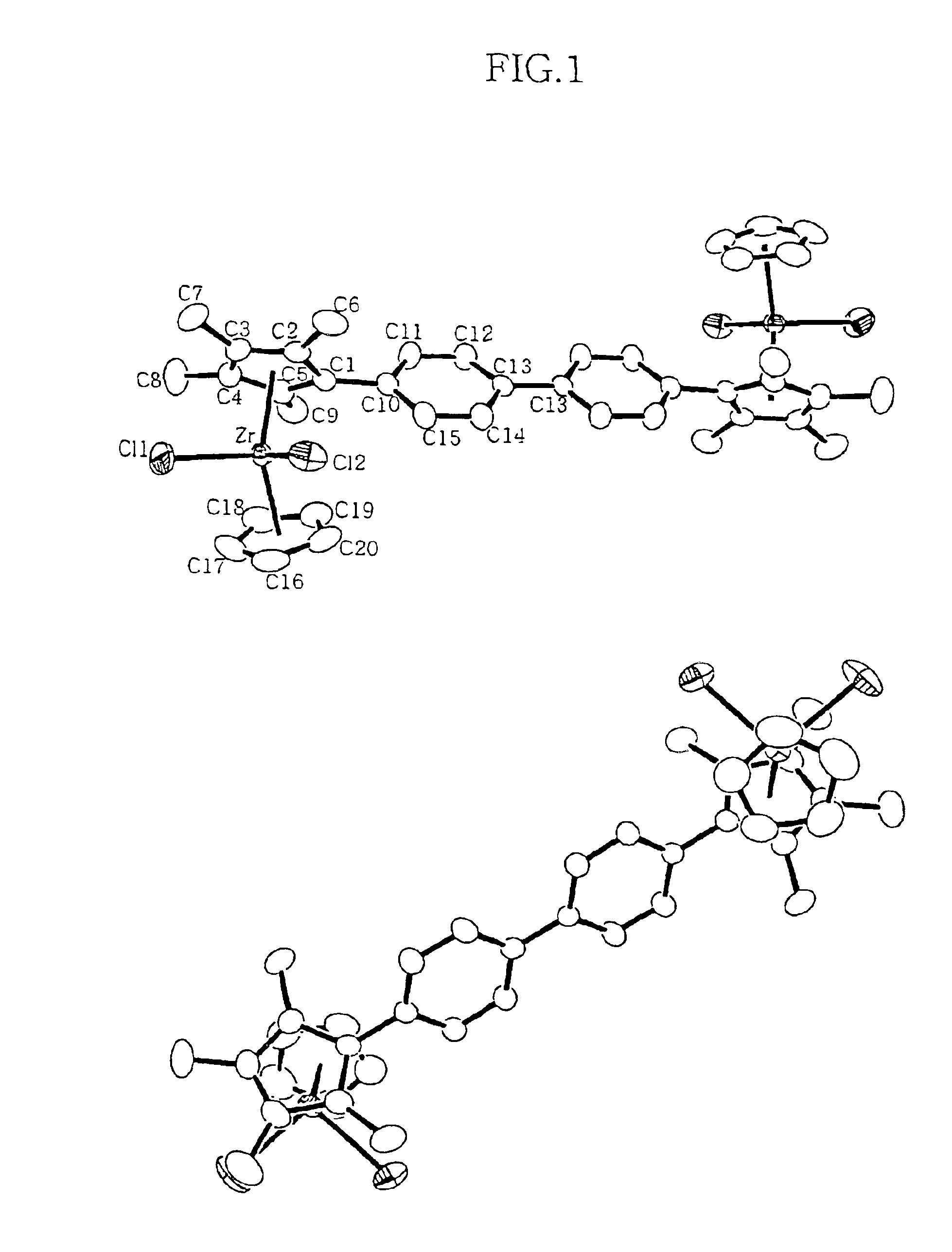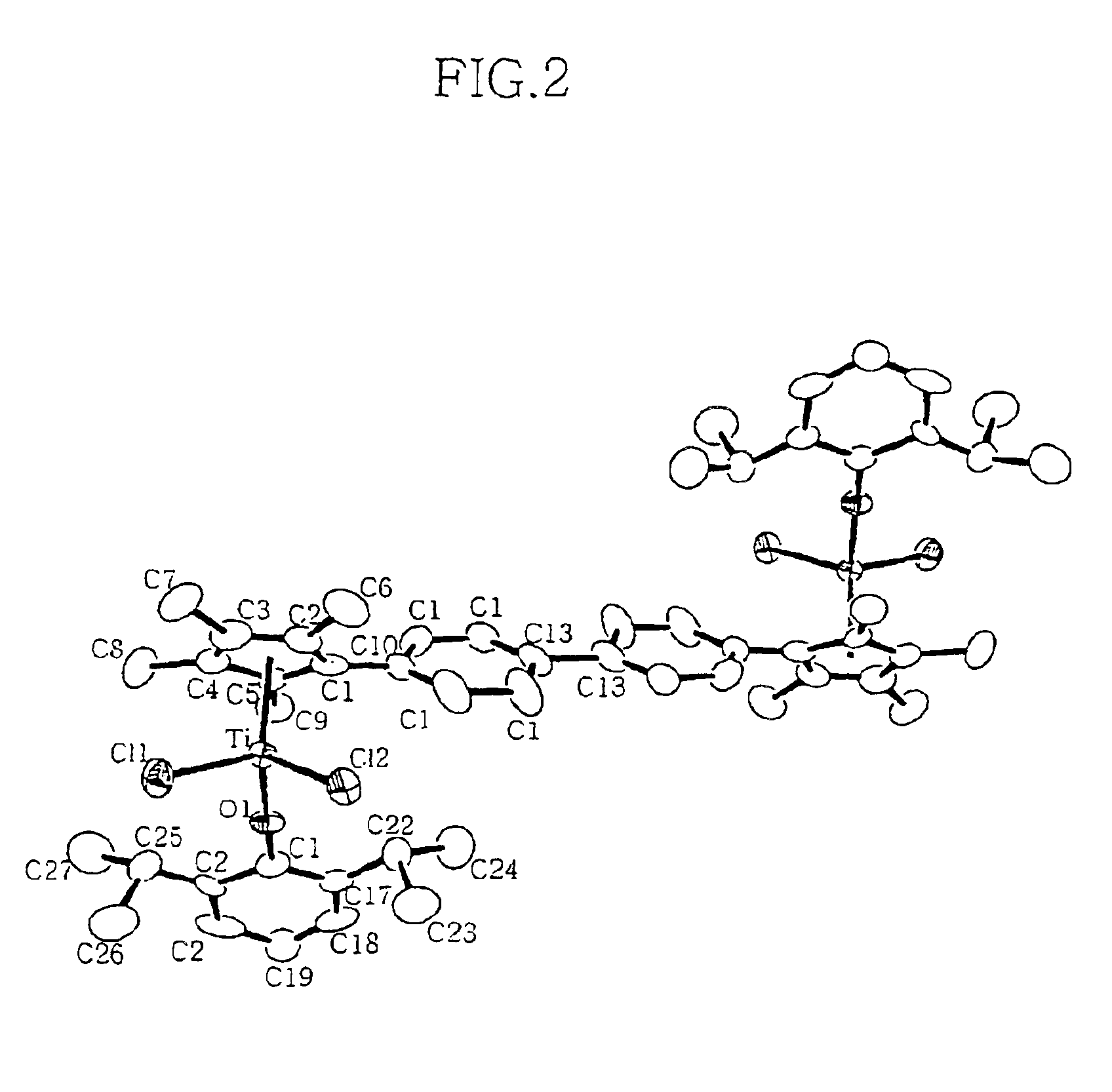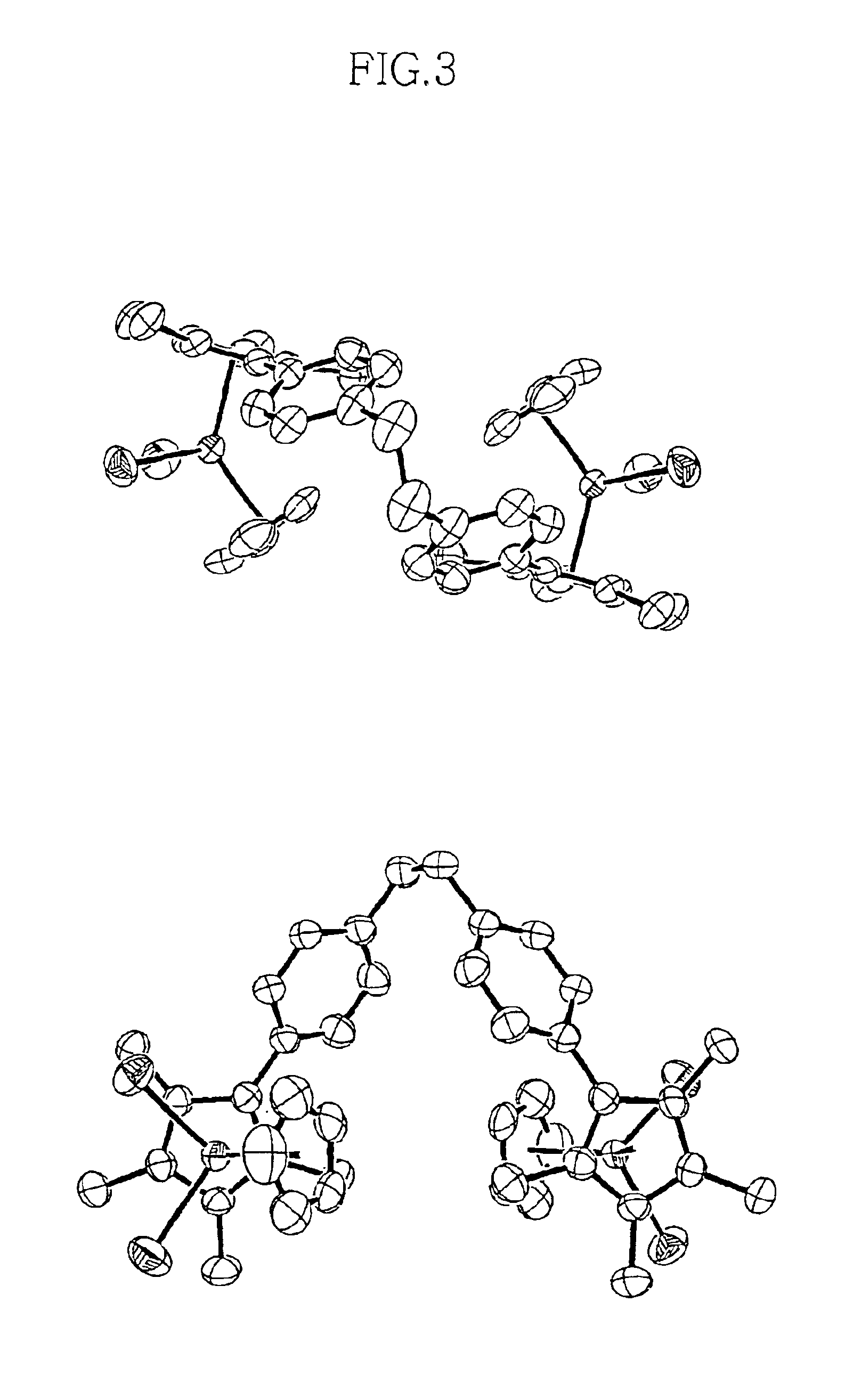Multinuclear metallocene catalyst
a metallocene catalyst, multi-nuclear technology, applied in the direction of catalyst activation/preparation, physical/chemical process catalysts, chemical/physical processes, etc., can solve the problems of high catalyst cost, complex catalyst system, and extremely high processing cost of polymers, and achieve high polymerization activity
- Summary
- Abstract
- Description
- Claims
- Application Information
AI Technical Summary
Benefits of technology
Problems solved by technology
Method used
Image
Examples
synthesis examples
Synthesis of Transition Metal Compound (A)
[0047]All the syntheses were performed in the inert (e.g., nitrogen or argon) atmosphere using the standard Schlenk method and the glove box method.
[0048]For purification, there were used sodium-potassium alloy for tetrahydrofuran (THF), toluene and n-hexane, sodium-benzophenone ketyl for diethylether, or calcium hydride (CaH2) for methylene chloride (CH2Cl2). Deuterium-substituted chloroform (CDCl3) used in the analysis of the organometallic compounds was dried on an activated molecular sieve 4A.
[0049]Some compounds commercially available were used without any further purification, examples of which may include 4,4′-dibromobiphenyl, 1,4-dibromobenzene, 4-bromobenzyl bromide, 2,3,4,5-tetramethyl-2-cyclopentenone, 2,6-diisopropylphenol, n-butyllithium (2.5M solution in n-Hexane), phenylmagnesium chloride (2.0M solution in THF), para-toluenesulfonic acid monohydrate (p-TsOH.H2O), trimethylsilyl chloride (Me3SiCl; TMSCl), triisopropoxytitanium ...
synthesis example 1
4,4′-biphenylene bis(2,3,4,5-tetramethylcyclopentadienyl) di(cyclopentanedienylzirconium dichloride) ([4,4′-(C5Me4)2(C6H4)2][CpZrCl2]2)
synthesis example 1 — 1
Synthesis Example 1—1
4,4′-bis(2,3,4,5-tetramethylcyclopentadienyl) biphenylene (4,4′-(C5Me4H)2(C6H4)2)
[0051]9.36 g (30 mmol) of 4,4′-dibromobiphenyl was mixed with 40 ml of diethylether to obtain a slurry and 24 ml (2 equivalent weights) of n-butyllithium was added to the slurry at −30° C. The temperature was then raised to 0° C. to turn the reaction solution clear and produce a precipitate (4,4′-biphenyl dilithium salt). At this temperature, the reaction solution was stirred for more 30 minutes, warmed to the room temperature and further stirred until the precipitate does not form any more. After malting the precipitate settle and discarding the supernatant, 30 ml of tetrahydrofuran was added and the reaction solution was cooled to −78° C. To the reaction solution was slowly added a solution prepared by dissolving 8.29 g of 2,3,4,5-tetramethyl-2-cyclopentenone in 20 ml of tetrahydrofuran. The reaction solution was then warmed to the room temperature and stirred overnight, and 30 ml...
PUM
| Property | Measurement | Unit |
|---|---|---|
| mole ratio | aaaaa | aaaaa |
| temperature | aaaaa | aaaaa |
| temperature | aaaaa | aaaaa |
Abstract
Description
Claims
Application Information
 Login to View More
Login to View More - R&D
- Intellectual Property
- Life Sciences
- Materials
- Tech Scout
- Unparalleled Data Quality
- Higher Quality Content
- 60% Fewer Hallucinations
Browse by: Latest US Patents, China's latest patents, Technical Efficacy Thesaurus, Application Domain, Technology Topic, Popular Technical Reports.
© 2025 PatSnap. All rights reserved.Legal|Privacy policy|Modern Slavery Act Transparency Statement|Sitemap|About US| Contact US: help@patsnap.com



